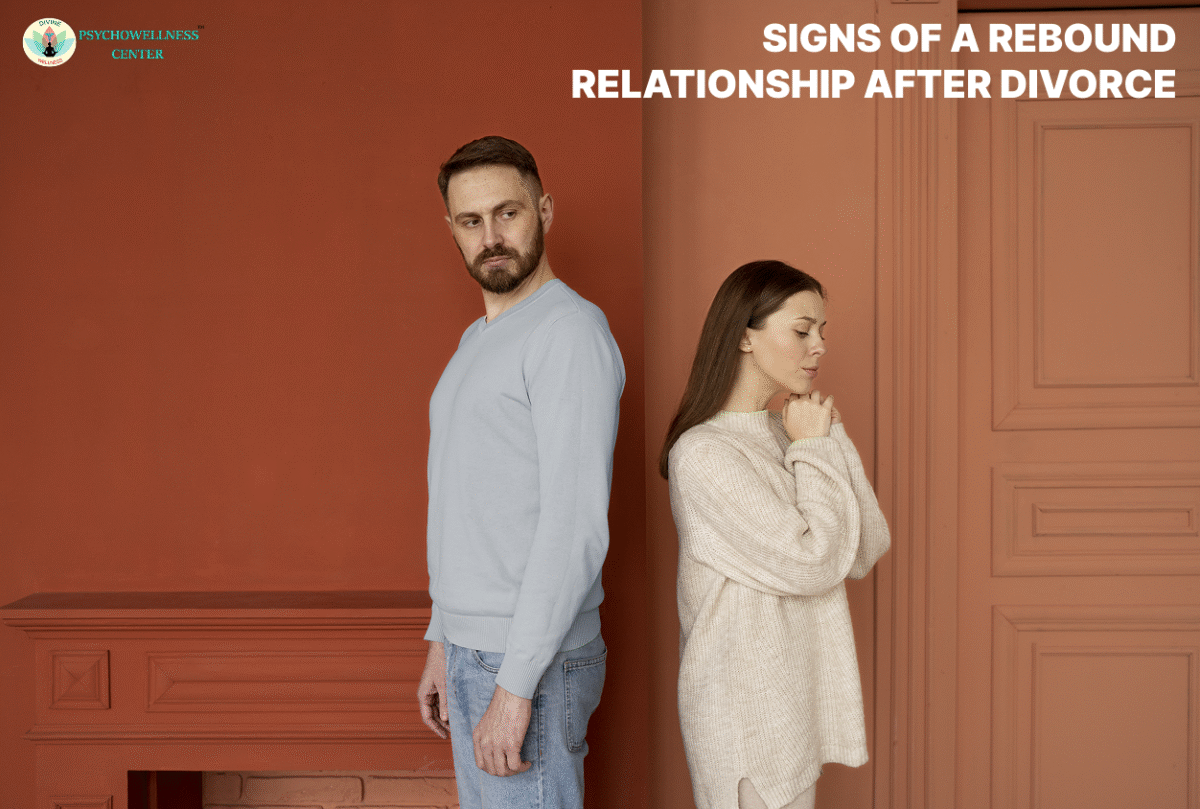Divorce is a life-altering experience that can leave individuals grappling with a complex mix of emotions, grief, anger, loneliness, relief, or even guilt. In the wake of such emotional upheaval, many seek comfort and validation through new romantic connections. While entering a new relationship might seem like a fresh start, it can sometimes be more of a coping mechanism than a genuine emotional bond. These relationships, often termed rebound relationships, may provide temporary relief but are rarely grounded in long-term compatibility. Recognising the signs of a rebound relationship is crucial to ensuring emotional well-being and paving the way for healthier future connections.
- Rapid Transition into a New Relationship
One of the most evident signs of a rebound relationship is the quick leap from a breakup into a new romantic involvement. Often, individuals begin dating again even before the divorce is finalized. This rapid transition usually stems from a deep-seated need to fill the emotional emptiness left behind by the end of the marriage (Brumbaugh & Fraley, 2015). Rather than reflecting readiness for a new beginning, such haste may indicate an avoidance of solitude and the discomfort that comes with facing one’s own emotions. Without taking the necessary time to grieve and rebuild self-identity, individuals risk carrying unresolved pain into the next relationship.
- Idealization of the New Partner
Another hallmark of rebound relationships is the tendency to romanticize the new partner, often seeing them as the complete opposite of the ex-spouse. In many cases, the new partner becomes less of a person and more of a symbol—an escape route from past trauma or emotional baggage.
- Avoidance of Emotional Processing
Post-divorce, it is essential to process emotions such as sadness, guilt, anger, and confusion. Rebound relationships can serve as emotional bypasses, distracting individuals from facing unresolved issues (Lewandowski et al., 2006). While the relationship may offer temporary relief, the lack of emotional processing can hinder long-term healing and growth, ultimately resurfacing in future conflicts or emotional distress.
- Overemphasis on Physical Intimacy
Physical closeness can offer immediate comfort and a sense of connection, especially after emotional detachment or loneliness. However, in rebound relationships, sexual intimacy frequently replaces emotional bonding (Brumbaugh & Fraley, 2015) . It becomes a coping strategy for validating self-worth rather than building a meaningful connection, leading to an unstable foundation.
- Lack of Future Planning
Rebound relationships often avoid discussions about plans, shared goals, or long-term compatibility. This absence of future orientation reflects the temporary nature of the bond and emotional instability (Spielmann et al., 2013). Relationships built on immediate gratification tend to lose momentum once the initial excitement wanes.
- Emotional Unavailability
Emotional detachment is another common sign. Individuals may be reluctant to show vulnerability, share personal thoughts, or express affection behaviours often rooted in unresolved feelings for a former spouse (Tashiro & Frazier, 2003). Emotional unavailability makes it difficult for the new relationship to develop genuine intimacy and trust.
- Frequent Comparisons with the Ex-Spouse
Comparing a new partner with the ex-spouse is indicative of emotional attachment to the past. Whether verbal or internal, these comparisons highlight unresolved grief and hinder the formation of an independent relationship identity (Sbarra, 2006). Such behaviour creates emotional tension and limits the potential for a healthy new bond.
- Concerns from Friends and Family
When friends and family express concern about a new relationship, it is important to listen. Their perspectives are often more objective and grounded in long-term observation. Ignoring these red flags can lead to repeated patterns and emotional pain (Morris et al., 2008).
Conclusion
Rebound relationships are not inherently harmful, but entering one without emotional readiness can lead to further distress. Recognising the signs—such as emotional unavailability, avoidance of grief, or the absence of long-term intentions—can prompt valuable self-reflection and healthier choices. Engaging in therapy, seeking counselling, and building a strong support system can significantly aid in emotional healing and in developing healthier, more stable relationships after divorce. If you’ve ever searched for the ‘best psychologist near me’ to navigate post-divorce challenges, the Psychowellness Center in Janakpuri and Dwarka Sector-17, Delhi, offers expert, evidence-based counselling and therapy focused on emotional regulation, relationship issues, and person-centred care. Would you prefer a more flexible or private setting? TalktoAngel offers secure online therapy sessions with licensed psychologists across India, making professional support easily accessible from the comfort of your home. Healing and empowerment after divorce begin with the right support. Call 011-47039812 or 7827208707 to begin your journey toward emotional clarity and stronger future connections.
Contributed by Dr. RK Suri, Clinical Psychologist and Ms. Nancy Singh, Counselling Psychologist
This blog was posted on 5 August 2025
References
Brumbaugh, C. C., & Fraley, R. C. (2015). Too fast, too soon? An empirical investigation into rebound relationships. Personal Relationships, 22(4), 633–645. https://doi.org/10.1111/pere.12060
Lewandowski, G. W., Jr., & Ackerman, R. A. (2006). Something’s missing: Need fulfillment and self-expansion as predictors of susceptibility to infidelity. Journal of Social and Clinical Psychology, 25(2), 168–183. https://doi.org/10.1521/jscp.2006.25.2.168
Morris, B. A., Shakespeare-Finch, J., Rieck, M., & Newbery, J. (2008). Multidimensional nature of posttraumatic growth in an Australian sample. Journal of Traumatic Stress, 18(5), 575–582. https://doi.org/10.1002/jts.20067
Sbarra, D. A. (2006). Predicting the onset of emotional recovery following nonmarital relationship dissolution: Personality, coping, and attachment. Personality and Social Psychology Bulletin, 32(3), 298–312. https://doi.org/10.1177/0146167205280913
Spielmann, S. S., MacDonald, G., & Wilson, A. E. (2013). On the rebound: Focusing on someone new helps anxiously attached individuals let go of ex-partners. Journal of Social and Personal Relationships, 30(7), 851–868. https://doi.org/10.1177/0265407512473863
Tashiro, T., & Frazier, P. (2003). “I’ll never be in a relationship like that again”: Personal growth following romantic relationship breakups. Personal Relationships, 10(1), 113–128. https://doi.org/10.1111/1475-6811.00039
https://www.talktoangel.com/blog/signs-of-a-rebound-relationship
https://www.psychowellnesscenter.com/Blog/relationship-counselling-divorce-counselling/
https://www.psychowellnesscenter.com/Blog/exploring-the-signs-of-manipulation-in-relationships/

